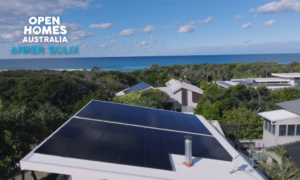According to the International Energy Agency, solar energy could account for approximately 16% of the world’s total low-temperature heating and cooling requirements by the middle of the century.
A roadmap launched recently by the organisation states achieving this goal would avoid in the region of 800 megatonnes of carbon dioxide annually; which is nearly 50% more than Australia’s total annual carbon emissions last year (546.3 megatonnes of carbon dioxide equivalent).
The IEA says if appropriate action is taken by governments and industry now, solar energy could annually produce more than 16% of total final energy use for low temperature heat and nearly 17% for cooling
“Given that global energy demand for heat represents almost half of the world’s final energy use – more than the combined global demand for electricity and transport – solar heat can make a significant contribution in both tackling climate change and strengthening energy security,” said Paolo Frankl, Head of the IEA’s Renewable Energy Division.
In terms of cooling, solar thermal cooling technology could reduce the burden on electric grids at times of peak cooling demand by fully or partially replacing conventional electric air conditioners in buildings.
In Australia, the impact of air conditioners in terms of peak power demand is massive; creating a huge amount of strain on electricity infrastructure and pushing up the wholesale price of electricity to thousands of dollar per megawatt hour at times. Even without whizz-bang solar thermal cooling technology, solar panels have had a positive impact in reining in wholesale electricity costs by generating electricity at times when it’s most needed – and closer to the point of consumption.
The IEA’s Technology Roadmap: Solar Heating and Cooling can be downloaded here (PDF).
In other news from the IEA, the organisation says it expects to see continue rapid growth in renewables uptake over the next five years. Global power generation from hydropower, solar, wind and other renewable sources is projected to jump by more than 40% to almost 6 400 terawatt hours (TWh), which is approximately 1.5 times the current electricity production in the United States.
Onshore wind, bioenergy and solar panels respectively will see the largest increases in uptake after hydropower says the IEA.














































